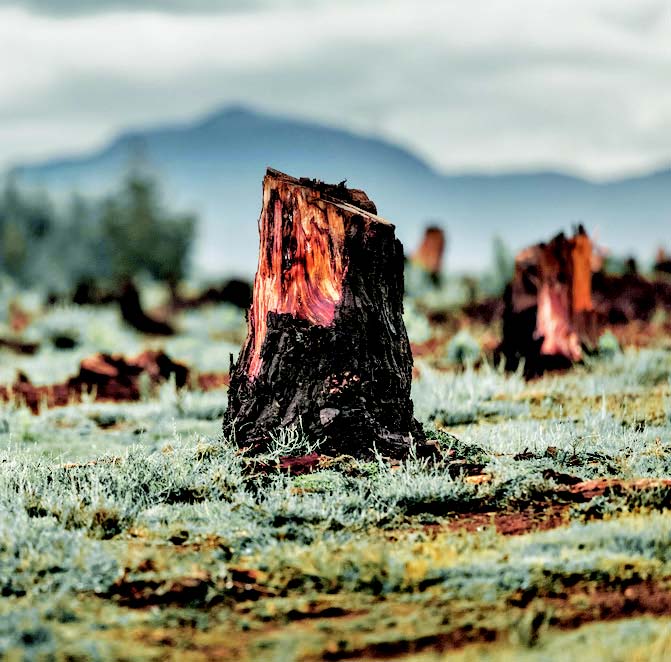In a few decades, we will permanently bid farewell to 40% of insect species, says a 2019 study by Francisco Sánchez-Bayo and Kris Wyckhuys published in the journal Biological Conservation.
Why is there an insect extinction, and how does it affect us?
Mass insect extinction

We are currently experiencing the sixth mass extinction – a dramatic loss in plant and animal life across the globe. While the loss of larger animal species may be more noticeable to us, insect populations have been declining rapidly in the background. Up to 40% of insect species will be lost in the next decades, and scientists have expressed deep concern.
Bees, moths, butterflies, and dung beetles are some of the species most affected. These insects are pollinators, decomposers, important prey, and significant components of nutrient cycling. They help grow wild and farmed plants, support entire ecosystems, and bring back nutrients to our soils, among others.
Not only are the insects in special niches declining, but so are the generalists who fill the roles left by the insects we’ve already lost. This is alarming, as generalist insects have more varied roles in our environment that help fill the gaps where there may be needed.
Why 40% matters
For one, entire ecosystems will collapse, said Sánchez-Bayo, one of the lead researchers of the 2019 study that is the first global survey of research on insect populations around the world.
As insects are commonly at the base of the food web, mass decline in their population will ripple consequences through their natural ecosystems, which will eventually affect us, according to a 2017 article by Simon Worrall for National Geographic. Growing food, for one, can be more challenging as insects, pollinators, and important components of nutrient cycling continue to decline.

They may not be top of mind now, but the absence of decomposers, such as dung beetles, will be an unpleasant reminder of how much we rely on these insects’ natural services.
The massive extinction of insects can also lead to biodiversity loss, changing our environment as we know it
What are causing the mass insect extinction?
1. Habitat loss
Deforestation, intensive agriculture, and urbanization are driving away insects from their natural homes.
One of the most prevalent causes of deforestation is animal agriculture. Seventy percent of all birds on the planet are poultry, while 60% of all mammals on earth are livestock. A huge amount of land is needed by the industry to cage billions of these animals – the environment, including insects, have been and continue to be sacrificed for man’s appetite.
2. Pollution
Agriculture is one of the main causes of insect extinction – it doesn’t only lead to habitat loss due to deforestation, but also pollutes the insects’ remaining homes. Researchers have found that insect populations declined fast even in agricultural areas that didn’t involve deforestation. One of the main causes they found is pollution from synthetic fertilizers and pesticides used in agriculture.
United States and Brazil are the two largest consumers of pesticides globally in 2015. Some of their most pesticide-intensive and largest-produced crops are soybeans and corn, both produced predominantly for animal agriculture.
3. Biological factors
Bees have been found to be more susceptible to pathogens due to the bees’ exposure to pesticide-contaminated pollen and nectar, which weaken the bees’ immune system. Invasive species are also a serious threat to biodiversity globally, and insects aren’t spared. A global meta-analysis in 2015 showed that 56% of invasive plant occurrences lead to a decline in insect diversity and health.
4. Climate change
Populations of half of the world’s insects have been declining due to the changing climate. Insects in tropical regions are highly threatened, as these species tend to have narrow thermal thresholds, making them vulnerable to temperature changes.
What can we do to help insects?

1. Eat local and plant-based
Large scale deforestation and intensive farming for livestock have to stop if we want our insects and environment to have a fighting chance. We can all lessen our ecological footprint by eating local plant-based food.
A 2018 study by Joseph Poore and Thomas Nemecek published in the journal Science showed that eating plant-based may be the single biggest way individuals can help the environment.
2. Grow native plants
A small patch of greenery may be the difference between life and death to a butterfly in the city.
Help insects survive, even in the city, by growing native plants instead of decorative ones. You can make the most out of a small patch of land or a pot by planting food such as okra, eggplant, and tomato.
3. Don’t use synthetic pesticides and fertilizers
When trying out your green thumb, don’t use synthetic pesticides and fertilizers. You can create your own natural fertilizer using kitchen scraps, leaves, and even coffee grounds. Alternatively, you can also buy from your local gardening store.
This appeared in Animal Scene magazine’s February 2020 issue.
You might want to read:
– The Philippine Leaf insect
– 10 animals with surprising intelligence
– Billions of locusts swarm through East Africa due to extreme weather swings





